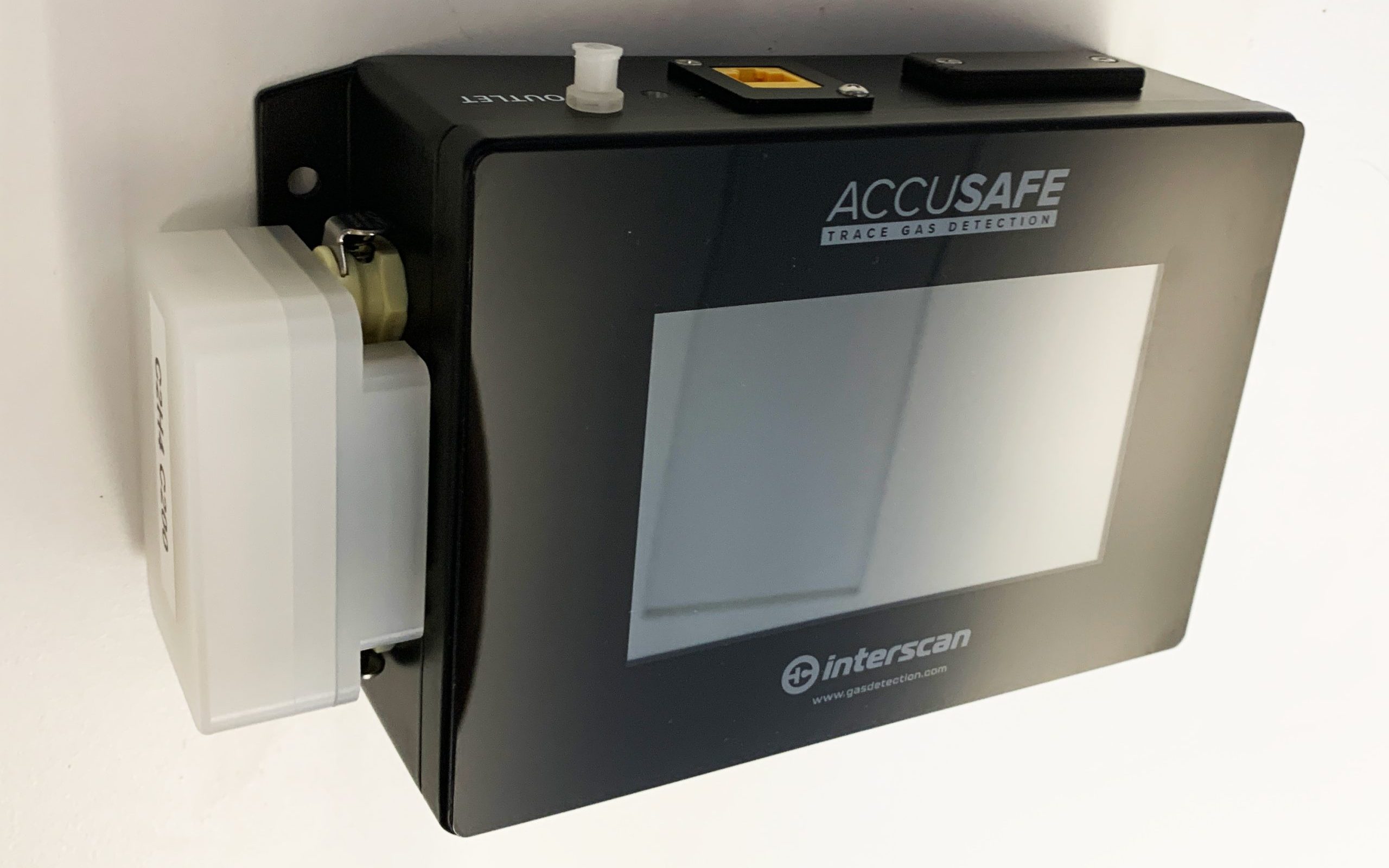Introduction
Ethylene Oxide (EtO) is a highly reactive and carcinogenic gas widely used for sterilization in medical and industrial settings. Due to its toxicological profile and strict regulatory limits, accurate detection of EtO at trace levels is essential. This case study investigates the detection efficacy of the AccuSafe Ethylene Oxide Monitor when sampling from a distance of 150 feet, simulating real-world scenarios where remote monitoring is required due to safety, infrastructure, or spatial constraints.
The objective of this study is to evaluate both the response time and sensitivity of the monitoring system over an extended tubing run, while identifying potential limitations in signal transmission, gas dispersion, and flow dynamics.
Methodology
The calibration method for this study initially followed standard configuration practices. As a control, a sample inlet with a T-junction was placed a few inches from the instrument inlet to represent a conventional calibration setup. In the 150-foot configuration, the T-junction was instead located at the end of the extended hose.
A baseline calibration cycle under standard (short-distance) conditions yielded a gain value of 2031 nA/ppm (Nominal = 1600 ± 400 nA/ppm). The table below summarizes the detection performance at 150 feet when this gain was applied:
| Time After Exposure | Measured Concentration (Target: 19.65 ppm) | Signal Loss |
| 5 min | 6.83 ppm | 65.2% |
| 10 min | 13.21 ppm | 32.8% |
| 15 min | 15.32 ppm | 22.0% |
| 20 min | 16.42 ppm | 16.4% |
| Peak Value | 17.01 ppm | 13.4% |
A typical calibration cycle ends between 5 and 20 minutes, depending on sensor conditions. A 5% signal loss was considered an acceptable margin of error for this study.
Distance-Specific Calibration
After assessing results using the short-distance gain, the system was recalibrated with the T-junction placed at the 150-foot distance. This configuration produced a new gain value of 1192 nA/ppm, still within the nominal range but biased in the opposite direction.
Performance relative to historical sensor data is shown below:
| Metric | Result | Performance vs. Baseline |
| T90 (Time to 90% of signal) | 4 min 6 sec | Slightly Below Average |
| Target Concentration Time | 4 min 24 sec | Average |
| R10 (Recovery to 10% of signal) | 4 min 13 sec | Better Than Average |
| 5-Minute Reading | 20.49 ppm | Within 5% Error Margin |
Discussion
The results indicate that ethylene oxide detection at 150 feet using the AccuSafe system is feasible and effective, particularly when calibrated under the same conditions as operational use. The standard gain calibration significantly underestimates actual concentrations due to signal delay and attenuation across the long tubing. However, when recalibrated with the distance in mind, the sensor delivers accurate and timely results within an acceptable error range.
It is critical to ensure that calibration and application conditions match, especially when working with extended sampling distances. Small time lags in signal acquisition and potential for gas dilution must be accounted for when interpreting data. Still, with proper setup and distance-specific calibration, remote EtO detection using this system proves to be a viable and accurate monitoring solution.


